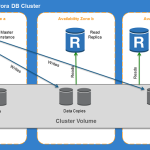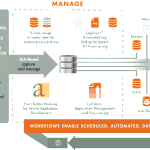[MongoDB]: Database locking
High lock or slow reads are often symptoms of other underlying issues. The various root causes for these issues include, but are not limited to: Schema design Document Movement (I’ll focus on this topic in more detail below) Poor index…

Why NoSQL ?!
The Demands of Your Database are Changing NoSQL technology was pioneered by leading internet companies — including Google, Facebook, Amazon, and LinkedIn — to overcome the limitations of 40-year-old relational database technology for use with modern web applications. Today, enterprises are…

AuroraDB – 5x better performance than standard MYSQL
Aurora on Amazon RDS Amazon Aurora is a fully-managed, MySQL-compatible, relational database engine that combines the speed and reliability of high-end commercial databases with the simplicity and cost-effectiveness of open-source databases. It delivers up to five times the performance…
Difference between MySQL INT(1) or INT(10) .. etc
I know im not alone in thinking that it affected the size of the data field. An unsigned int has the max value of 4294967295 no matter if its INT(1) or int(10) and will use 4 bytes of data. …

ACTIFIO – Copy Data Virtualization
ACTIFIO ENTERPRISE IS THE SOLUTION Actifio Enterprise™ is the highly scalable copy data management platform that virtualizes application data to improve the resiliency, agility, and cloud mobility of your business. It works by virtualizing data in much…
[MongoDB]: Roles and Responsibilities
Roles and Responsibilities As with any database, applications deployed on MongoDB require careful planning and the coordination of a number of roles in an organization’s technical teams to ensure successful maintenance and operation. Organizations tend to find many of the…
[MongoDB]: Database References
MongoDB does not support joins. In MongoDB some data is denormalized, or stored with related data in documents to remove the need for joins. However, in some cases it makes sense to store related information in separate documents, typically in different…
[MongoDB]: Selecting a Shard Key for MongoDB
On Selecting a Shard Key for MongoDB – Bad-Ass Unicorn One of the killer features of MongoDB is the built-in sharding capabilities. This feature lets you spread out both your data, and your database workload, over multiple commodity-scale machines. While…
![[MongoDB]: Shard keys](https://dbversity.com/wp-content/uploads/2015/01/sharding-range-based-150x150.png)
[MongoDB]: Shard keys
Shard Keys¶ The shard key determines the distribution of the collection’s documents among the cluster’s shards. The shard key is either an indexed field or an indexed compound field that exists in every document in the collection. MongoDB partitions data…
[MongoDB]: How to use Write Concerns
This post describe on how to use write concerns in MongoDB and how it impacts durability, performance and resiliency. Write Concerns: This describes the level of concern or guarantee the server will provide in its response to a write operation….
